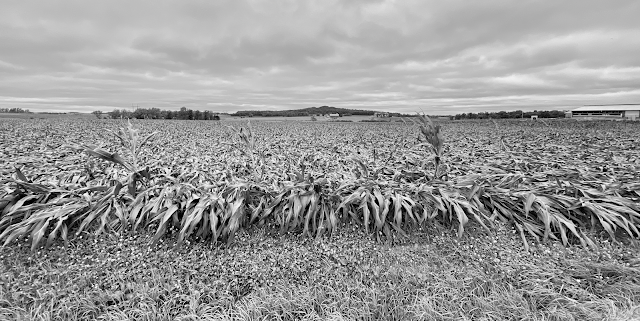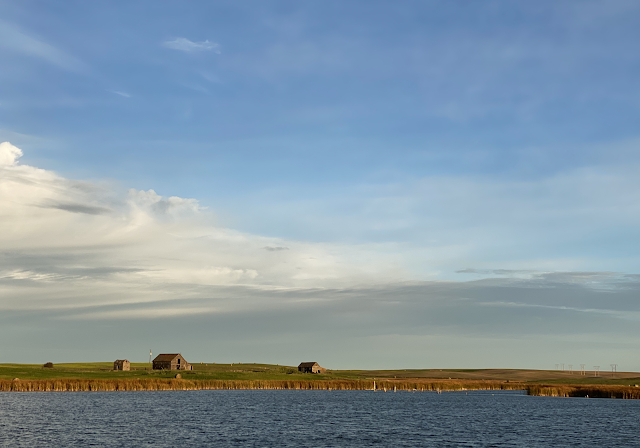Smith: Tracking surveys remain critical part of DNR's gray wolf population estimate in Wisconsin
Tracking surveys by DNR staff and volunteers in winter are critical to the agency's method of estimating Wisconsin's gray wolf population.
RHINELANDER – A recent one, two punch of snowfalls laid a carpet of white in the Oneida County forest.
Scenic, yes. Seasonal, too.
But for Steve Meurett of Neillsville, it was all about the canvas.
"It's just about perfect," Meurett said as he slowly steered his pickup truck down a forest road outside Rhinelander.
The second snowfall deposited 3/4 of an inch on top of the 6-inch base. And it did it 36 hours ago.
Meurett, a member of the Timber Wolf Information Network, looked intently out his side window as he drove.
"There," Meurett said, stepping on the brake and sliding the transmission into park. "Let's see what we have."
Meurett hopped out and loped over to a spot where a pair of tracks bisected the roadway. Jamie Dowdall of Mercer, Kathy Gagner of Marshall and I followed.
"We've got our first wolves of the day," Meurett said. "Two and maybe more."
Meurett is a tracking instructor and board member of the Timber Wolf Information Network, a non-profit based in Eau Claire.
Over the next 10 minutes Meurett pieced together the clues left in the snow by the passing animals. There were four wolves in all. They traveled in single file through the woods, in places squeezing through narrow openings in blowdowns, then fanned out as they climbed the berm and crossed the road.
Within 100 yards we also found numerous tracks of white-tailed deer and red squirrels and one snowshoe hare.
The recent topping of snow was welcome, Meurett said. So was the timing. Our Jan. 26 outing benefitted from two nights – or "activity periods" – for the animals to leave tracks.
If the snow is too old, the accumulation of tracks is harder to deciper. If it's too new, or if it's actively snowing, the animals don't have enough time to leave sign.
"Today is a Goldilocks day for winter tracking," Meurett said. "Let's get in and see what else we can find."
This outing is part of a TWIN carnivore tracking workshop led by Meurett. Dowdall and Marshall are participants in the event and I joined to see how field conditions – and the state's winter wolf tracking surveys – are shaping up this winter.
As you likely know, the winter of 2023-24 was terrible for traditional winter activities in northern Wisconsin. The ice was very poor. Snowmobile trails never opened in many counties due to lack of snow.
And wolf trackers struggled to conduct winter wolf tracking surveys for the Department of Natural Resources.
Combined with failures of a batch of GPS collars in 2024, the extremely poor tracking conditions and atypical data prompted DNR scientists to refrain from making a wolf population estimate last year.
It was the first time since the state's wolf tracking program began in 1980 without either an annual minimum wolf count or population estimate.
In 2022-23 the DNR estimated Wisconsin had 1,007 pack-associated wolves and 283 wolf packs.
The tracking work by DNR staff and volunteers such as Meurett provides critical, on-the-ground data to produce a wolf population estimate.
The tracking data is the primary input for the DNR's occupancy-based wolf model, the population estimate used since 2020 for wolves in Wisconsin.
The agency had previously used tracking information to produce a minimum count of wolves.
Wolves are arguably the most controversial of all wildlife comebacks in North America.
The species was native to Wisconsin but deliberately extirpated by the middle 20th century through unregulated hunting and government programs, including bounties.
Aided by protections of the 1973 Endangered Species Act, wolves began to build from the only remaining population in the lower 48 – in northern Minnesota – and disperse into Wisconsin and Michigan.
The number of wolves in Wisconsin was estimated at 25 in 1980, 34 in 1990, 248 in 2000, 704 in 2010 and about 1,200 in 2020, according to the DNR.
The agency has used a variety of means over the decades to monitor the state's wolves, including spotting by aircraft.
But boots-on-the-ground tracking has always been a part of it.
The volunteer tracking program, initiated in 1995 by former DNR wolf biologist Adrian Wydeven, requires participants to drive through assigned blocks and record all carnivore signs they see.
Speed must be less than 10 mph. The blocks average 200 square miles and must be tracked at least three times each winter using different routes.
The work is done in winter, when wolves are easiest to track and observe. It's also when the population is at its annual low. Wolf populations typically double after pups are born in spring then decline throughout the year due to various sources of mortality.
The goals of the tracking survey are to determine the number, distribution, breeding status and territories of wolves in Wisconsin; develop a sense of the abundance and distribution of other medium-sized and large carnivores in the state; and determine the existence of rare carnivores such as Canada lynx, cougar and wolverine.
The tracking data as well as information obtained from GPS-collared wolves helps determine pack territories, said Randy Johnson, DNR large carnivore specialist.
Recent work allowed DNR scientists to estimate the average Wisconsin wolf territory size at 64.7 square miles, according to the 2022-23 Wisconsin wolf monitoring report. Neighboring wolf packs may share a common border, but their territories seldom overlap more than a mile, according to the DNR.
The average number of wolves per pack ranged from a high of 4.3 in management zone 1 to a low of 2.4 in zone 6, according to the 2022-23 report.
The tracking work typically begins Dec. 1 and goes through March 31, Johnson said. The DNR has the state's wolf range (mostly in the northern and central forest areas) divided into 144 tracking blocks.
So how is it going this winter?
"It started out pretty touch and go and made me nervous," Johnson said. "But it took a turn for the better and we're in pretty good shape right now."
Johnson said as of Feb. 27 wolf trackers have completed 375 surveys, just shy of the 432 if each block had three surveys run.
"I would like to see a little more snow in March to round out the tracking period," Johnson said. "Right now we're sitting in a pretty good spot."
Things are looking better this winter with regard to GPS-collared wolves, too. Johnson said between DNR-monitored wolves and those being followed by tribal partners, 28 wolves are "on the air" as of late February.
Overall he's optimistic the DNR will produce a wolf population estimate for the winter of 2024-25, perhaps as early as this summer.
Meurett is doing his part, too, to train more wolf trackers.
Over the course of three hours he drove Dowdall, Gagner and me on a 10-mile circuit through Oneida County and demonstrated what it takes to be a volunteer wolf tracker.
He pulled out his tape measure often and showed the difference between coyote and wolf. He also expertly picked up the trail of a domestic dog out for a run down a snow-covered lane.
TWIN is one of the DNR's partners in training and maintaining a corp of wolf trackers. TWIN's mission is to "increase public awareness and acceptance of the wolf in its natural habitat and its ecological role in the environment."
Meurett isn't just a trainer - he also runs wolf tracking blocks in the central forest each year to contribute to the DNR's data.
In late morning Meurett has another "there" moment and pulls over. We pile out and he shows us where a wolf did a "raised leg urination," or URL in wolf trackers parlance, on a mound of snow.
Nearby are several large, disturbed areas. Meurett thinks the wolves were rolling in the snow.
Over the three hours we see four deer and several squirrels and two bald eagles.
But we don't see a wolf with our eyes.
"They are mostly nocturnal, so now they're probably off snoozing," Meurett says at 1 p.m. as we are headed back to town. "We have to be content seeing the signs they left behind. But for a tracker, that's more than enough."
-Paul Smith Milwaukee Journal Sentinel

















































